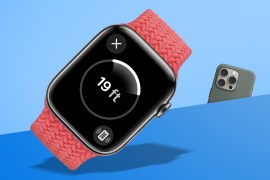Samsung Galaxy S23 Ultra review: camera king
The does-it-all flagship is back with even more photographic potency

After its predecessor picked up where the retired Galaxy Note left off, while also packing some of the most capable cameras found in the Android world, the Galaxy S23 Ultra had a lot to live up to. What else was the hero of Samsung’s latest line of flagship phones to do but continue to embrace the S Pen, and double down on photography?
There haven’t been many visual changes, with Samsung instead borrowing its styling for the more mainstream Galaxy S23 and S23 Plus. But under the skin, a new 200MP main snapper promises even higher quality shots, regardless of lighting conditions. Add in a custom-tuned version of the fastest mobile silicon currently doing the rounds and, on paper at least, the S23 Ultra does plenty to justify its premium price. Does it do enough to be one of the very best smartphones around?
Review originally published 8 February 2023
Design & build: a familiar face
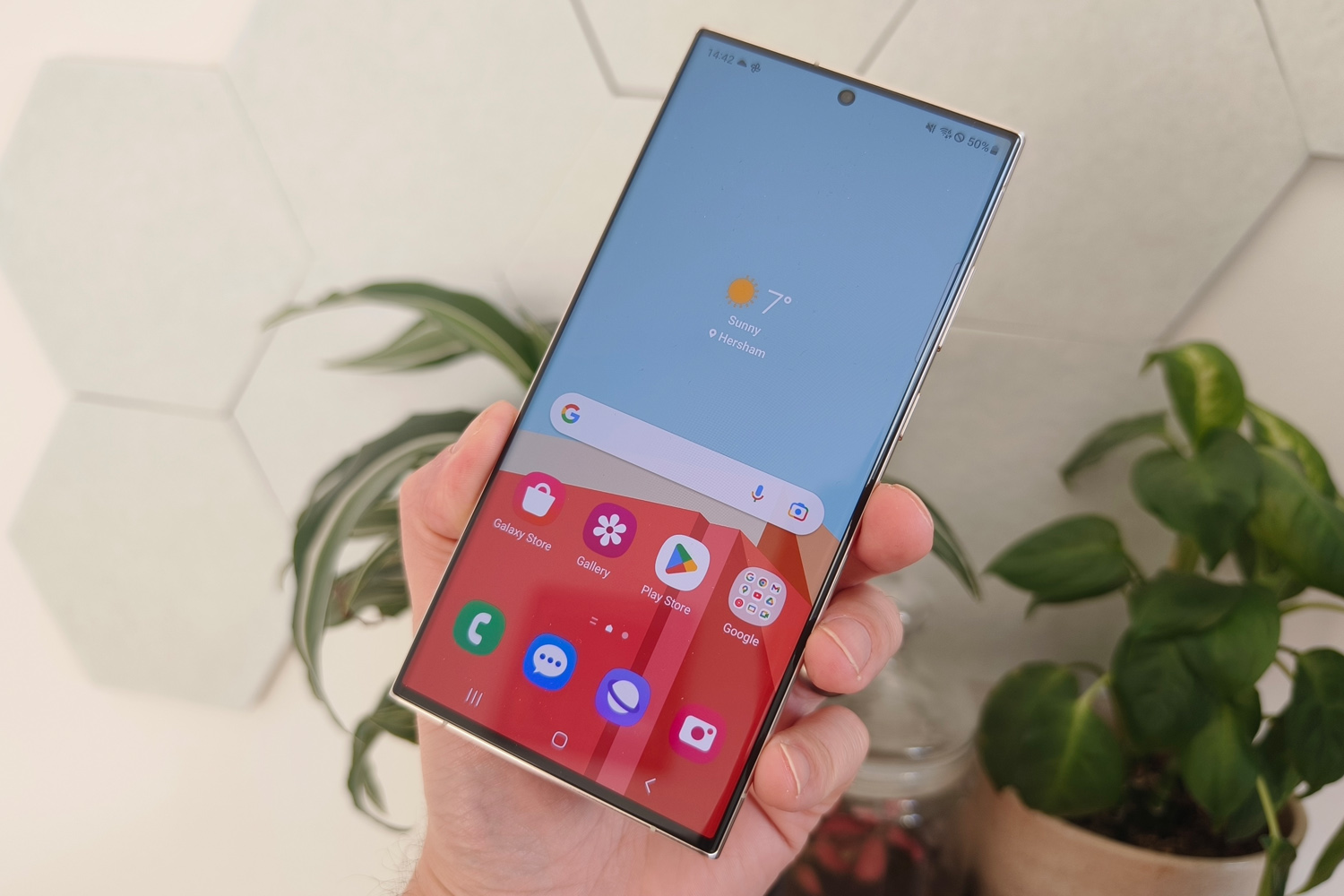

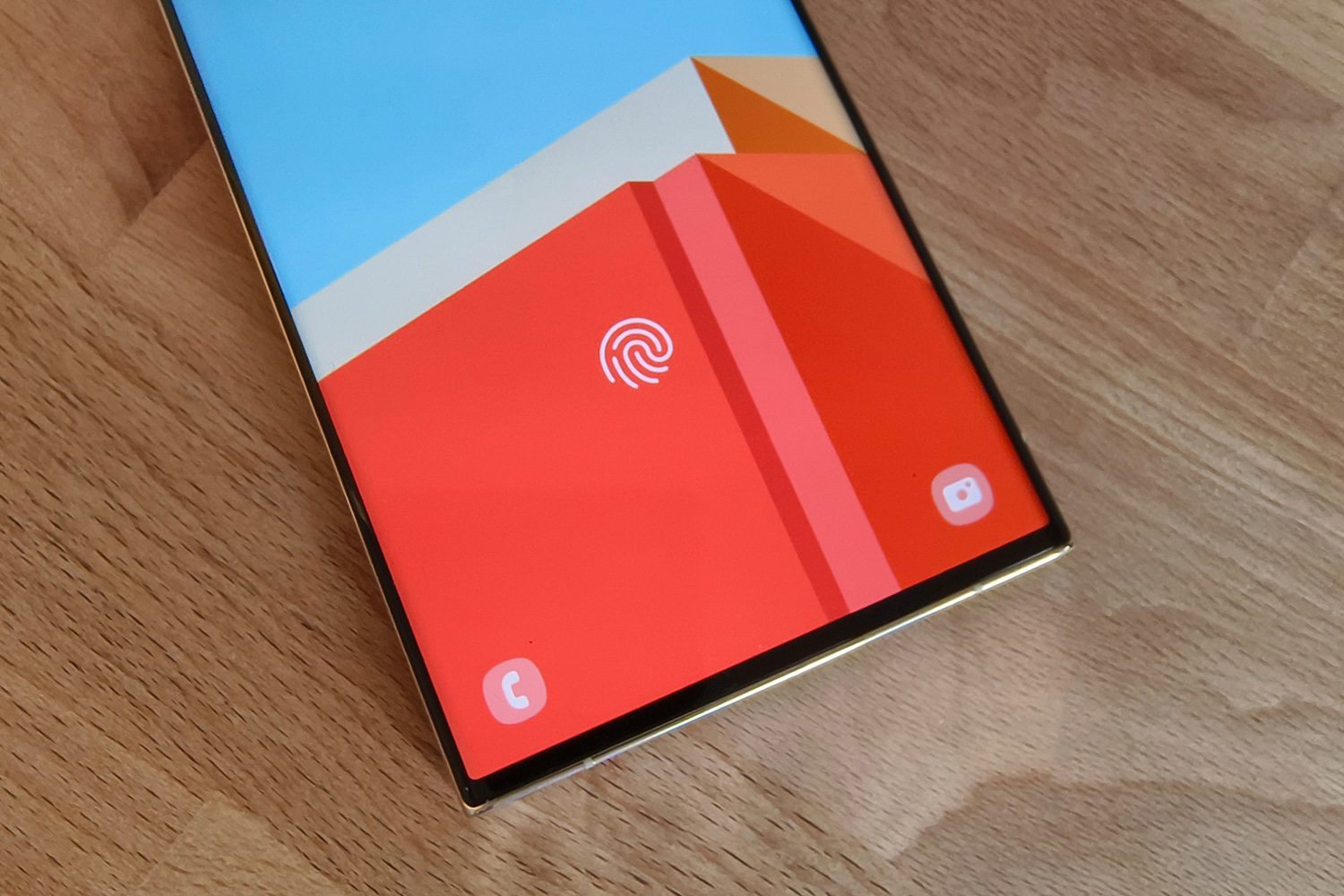
Ever pick up a Galaxy S22 Ultra? Then you’ll have a pretty good idea what to expect from its replacement. Even with curved glass that bends into the central metal frame to minimise width, it’s still a big brute of a phone. After all, there are only so many ways to slim down while still making room for the integrated S-Pen stylus.
As a result, the dimensions haven’t really changed at all. The S23 Ultra is still big enough to want to use with two hands, even when you’re not wielding the S-Pen, and at 234g there aren’t many non-foldable phones that tip the scales more. Apple’s switch to titanium means the new iPhone 15 Pro Max is a fair bit lighter at 221g. Samsung has also mixed things up on the materials front, though, doubling the number of recycled components. The power and volume keys are apparently made using recycled water barrels, yet feel every bit as premium as the rest of the phone.
It’s also one of the first phones in line for Gorilla Glass Victus 2 glass, so should hold up well to wear and tear. According to Samsung, it’ll survive a 1m drop straight onto concrete; we didn’t test the theory, but the screen was certainly free of micro-scratches after a week of living in our pocket.
The whole thing is still IP68 water and dust resistant, so can survive a trip to the beach or accidental dunking, and a fingerprint sensor still sits underneath the display for biometric security. It’s quick, accurate, and placed high enough that you don’t need elastic thumbs to reach it.
Colour will be the biggest clue you’re rocking a new phone, rather than last year’s model. Phantom Black is the least attention-grabbing, while Green and Lavender use subtle pastel hues. We reckon our Cream review unit looked especially sleek, and the matte finish does a great job of hiding fingerprints. Graphite, Sky Blue, Red and Lime colours are exclusive to Samsung’s web store.
Screen & sound: big and bold
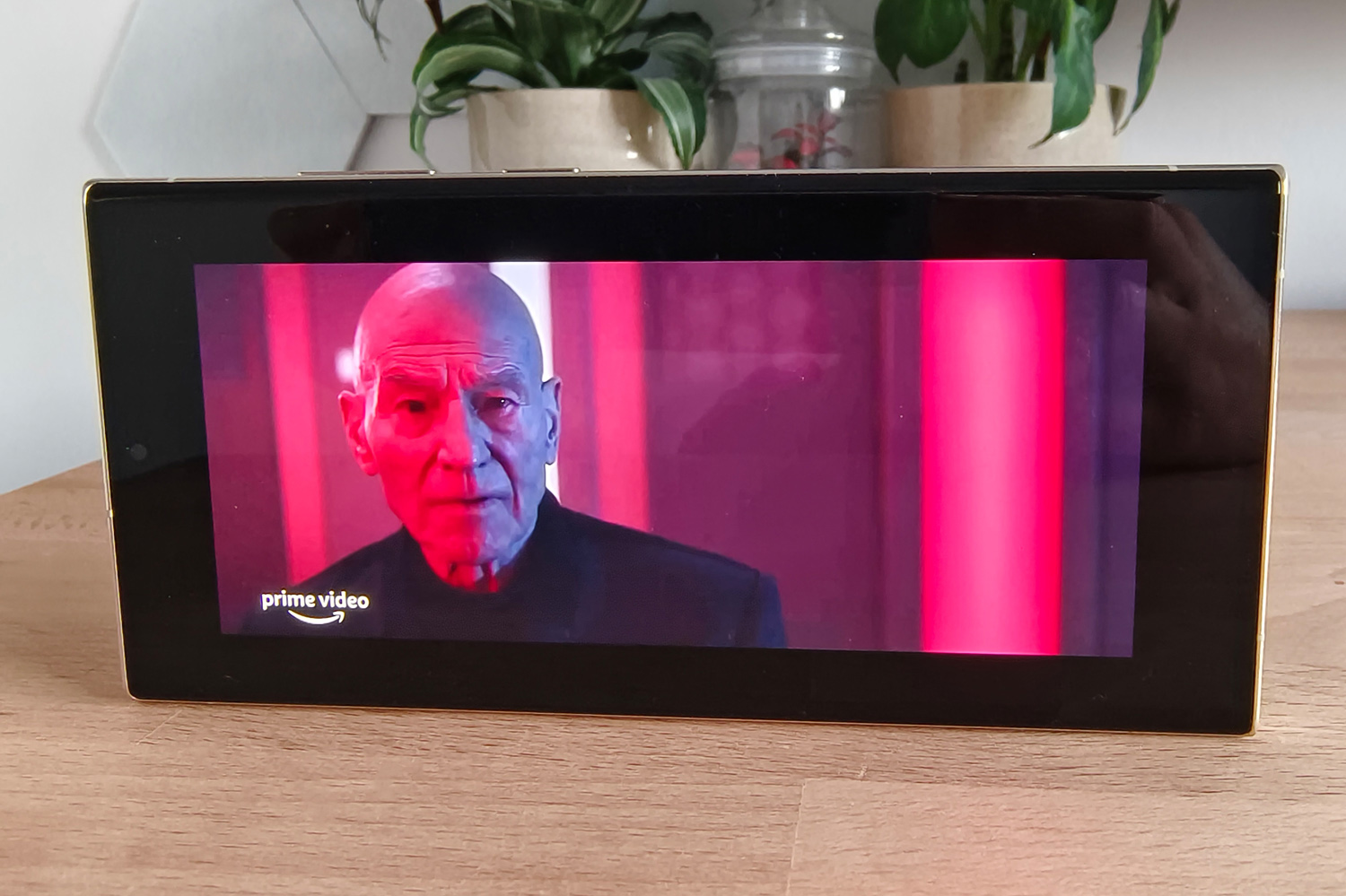
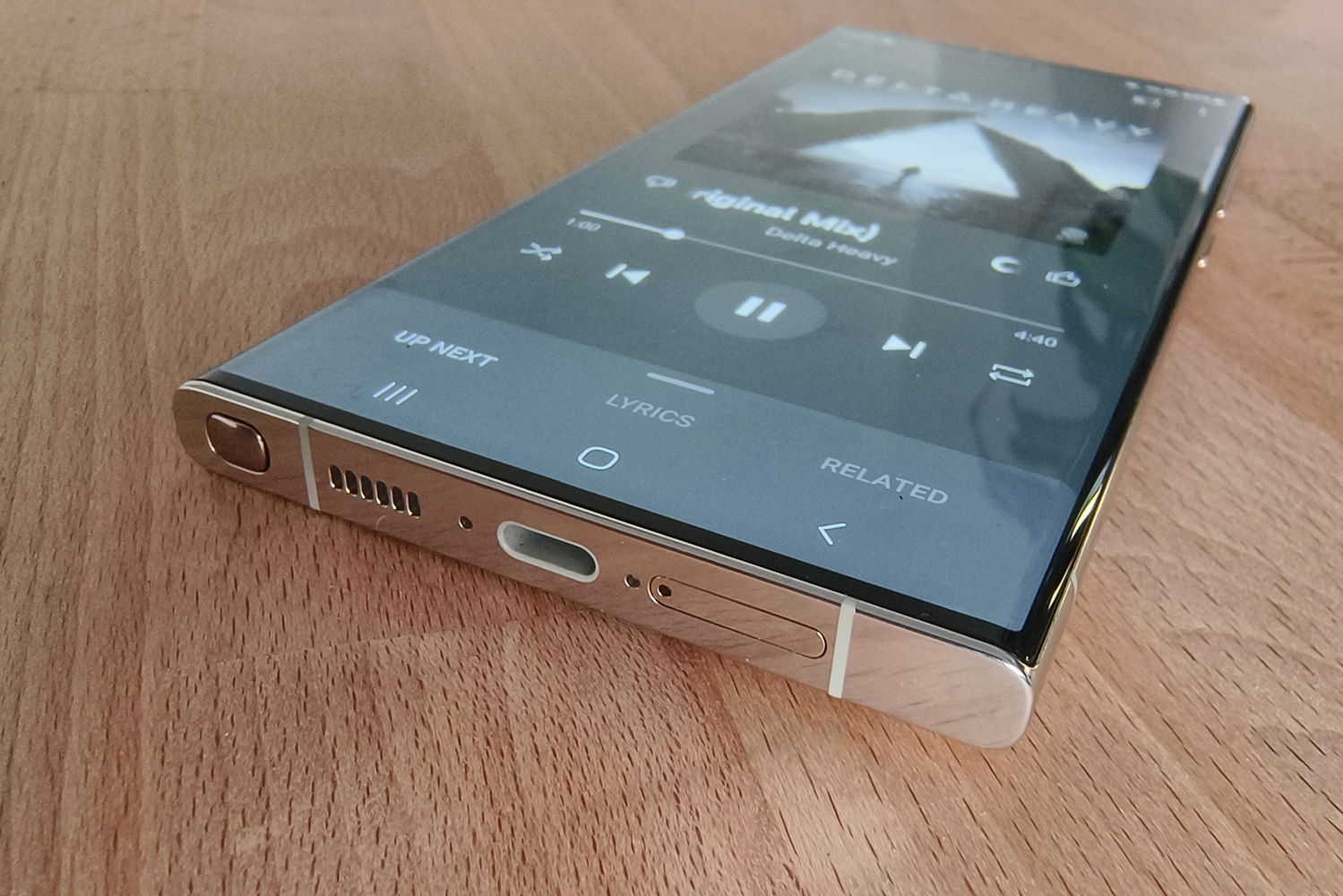
At 6.8in, the Galaxy S23 Ultra’s AMOLED display is expansive, with a 3088×1440 resolution that guarantees even tiny text looks pin-sharp. Curved glass makes another appearance, but the radius is subtler here than it was on last year’s Galaxy S22 Ultra. That means there’s more flat surface area (handy for screen-filling S-pen doodles) and reflections that aren’t nearly as distracting.
Samsung makes some of the best smartphone screens around, so there’s no surprise its flagship model is so easy on the eyes. Colours are a little on the vivid side, but don’t stray too far from real life, and it does real justice to HDR10+ content, with perfect blacks and near-infinite contrast.
Viewing angles are excellent, and brightness is also exceptional, hitting the same peak 1750nits as its predecessor. It doesn’t quite match the Apple iPhone 14 Pro Max’s claimed 2000nit peak, but ensures the screen is perfectly legible, even in direct sunlight.
The adaptive 120Hz refresh rate makes scrolling look wonderfully smooth, and while there’s no option to force it on all the time, we didn’t find any apps that failed to trigger a leap to 120Hz. Touch response using the S-Pen is superb, getting close to a pen-on-paper feel.
Dolby has given the Atmos seal of approval to the stereo speakers. Sound is more heavily weighted to the down-firing driver, with the earpiece speaker picking up the higher end of the frequency range, but they’re very well balanced. For podcasts or YouTube videos, there’s enough volume and clarity here to not instantly send you scrabbling for a pair of earphones.
Samsung Galaxy S23 Ultra cameras: detail-oriented
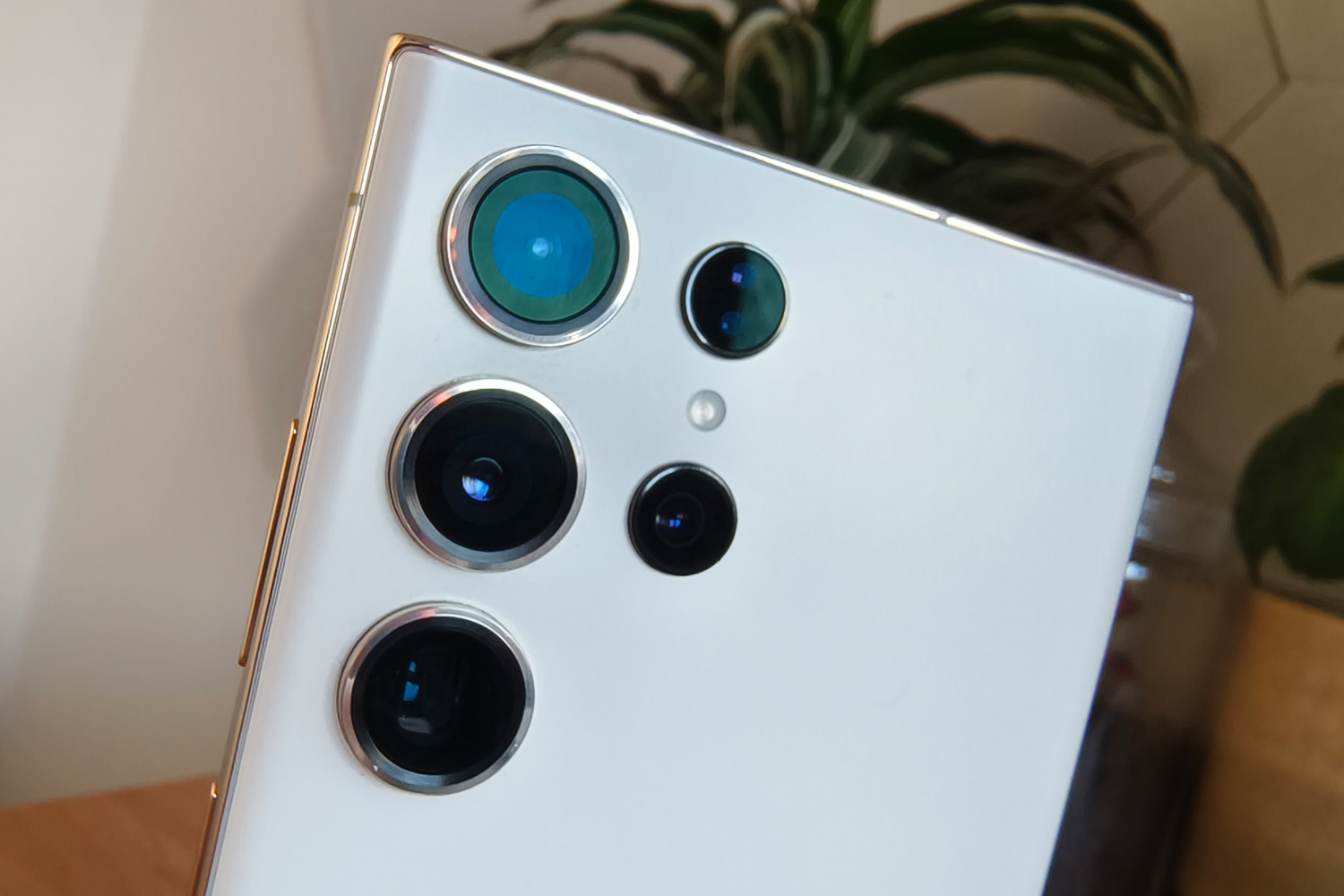
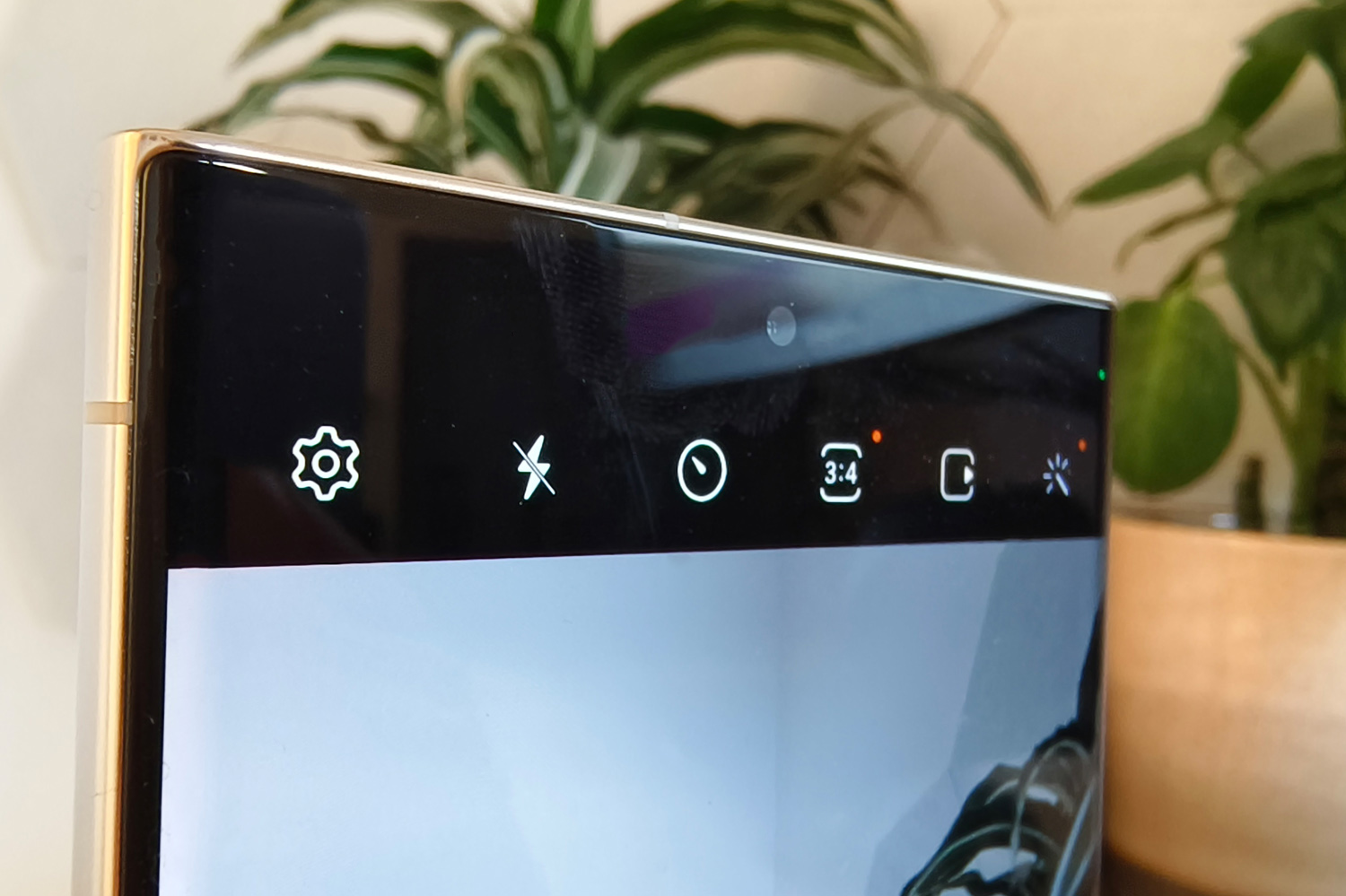
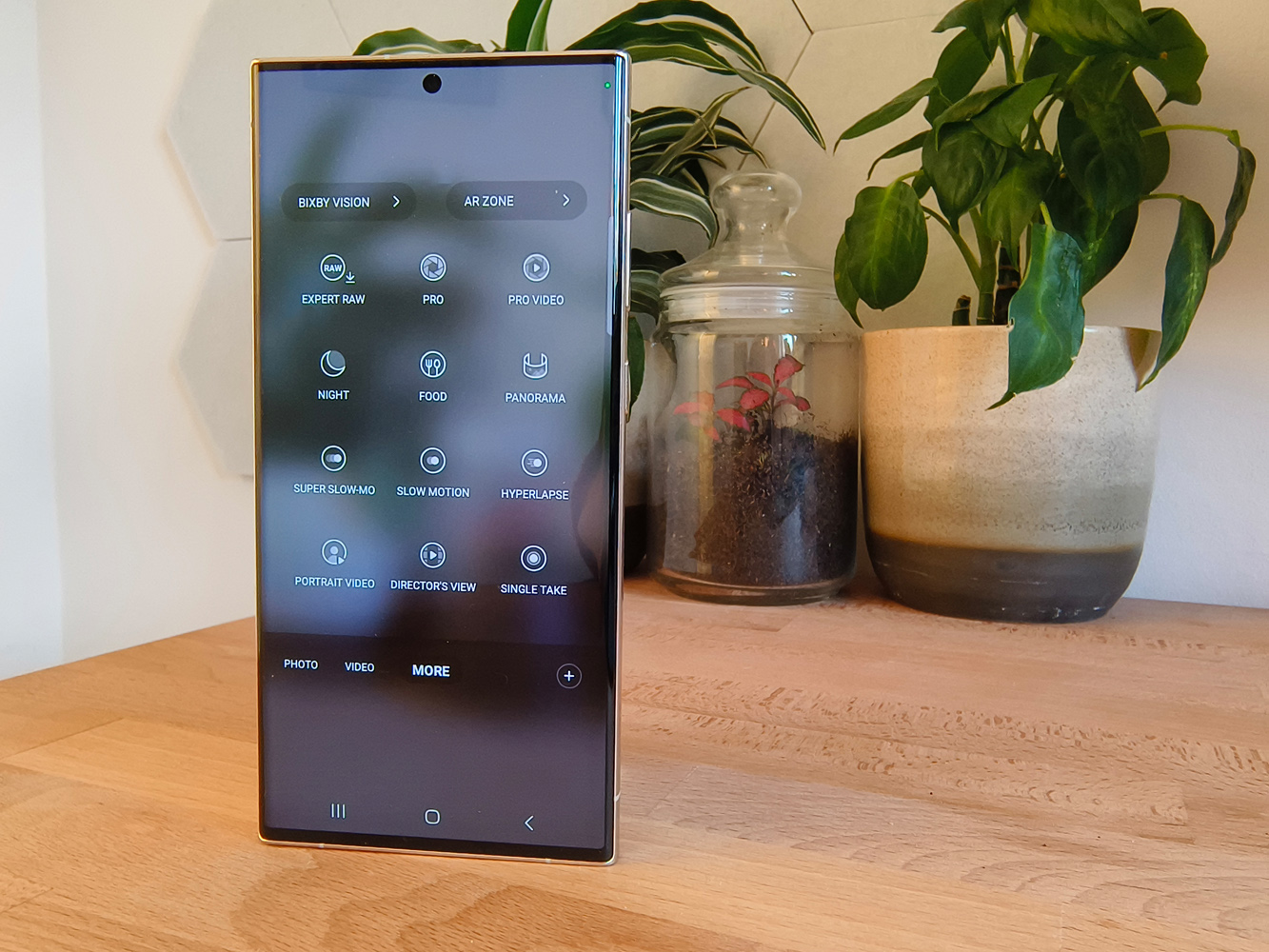
It isn’t the first phone we’ve seen with a 200MP rear camera (that honour goes jointly to the Xiaomi 12T Pro and Motorola Edge 30 Ultra), but the Galaxy S23 Ultra is first in line for Samsung’s home-grown HP2 sensor. As well as being able to take exceptionally detailed 200MP stills in bright conditions, it uses 16-to-1 pixel binning for equally impressive low-light snaps.
The rest of the rear lens line-up hasn’t changed from last year, meaning you get a 12MP ultrawide and twin 10MP telephotos. One is good for 3x optical zoom, while the other delivers 10x – and can pull off up to 100x digital zoom, although there are diminishing returns as you add more magnification.



Samsung already traded blows with Apple and Google as the best smartphone for photography, and the S23 Ultra cements its position near the top of the tree. Focusing is for the most part exceptionally quick across all four lenses, which all deliver matching colour, contrast, and exposure, but the clarity and detail on display from the main sensor is truly impressive.
Outdoors in good light, it can capture building brickwork and facial features from a considerable distance, without too much sharpening. Colours are as vibrant we’ve come to expect from Samsung, with HDR processing that’s a little more prominent in places than you’d see on some rivals. The results might not be entirely true to life, but they’re certainly visually pleasing. Whether you prefer Google or Apple’s treatment is largely down to personal preference.
An update in June 2023 improved autofocus responsiveness, which could be a little laggy when tracking fast-moving subjects. A 2x zoom option was also added to the Portrait mode, which makes fitting faces into frame that bit easier than the 3x setting it defaulted to at launch.









Low-light snaps are stunning at times, with HDR working hard to expose even bright streetlamps neon signs while still preserving shadow detail. White balance is preserved better than on other phones, and there’s a satisfying lack of noise. Effective optical image stabilisation makes it possible to photograph the moon at extreme magnification without first reaching for a tripod.
Night time portraits are more convincing now, thanks to digital bokeh algorithms that analyse hair, skin and eyes separately before applying any blur. Certain hairstyles can still catch it out (and in good light, too), but we had few complaints once we dialled the effect strength back a bit. A software update that landed post-launch improved low light processing even more, putting it up there with the best phones for shooting in the dark.




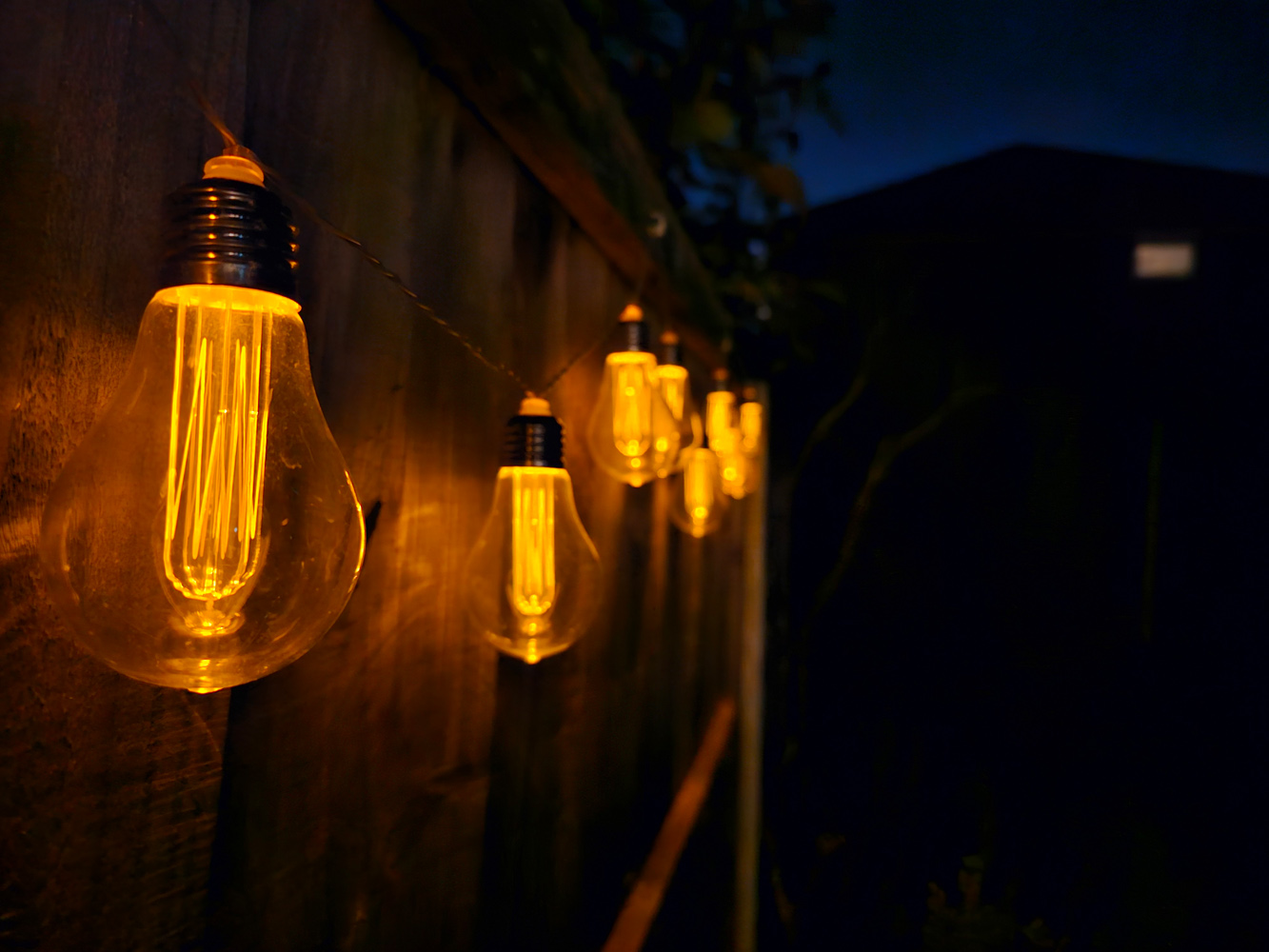
Up front, the selfie cam now has a 12MP sensor, rather than the pixel-binning 40MP unit seen on last year’s Galaxy S22 Ultra. Pictures look a little sharper as a result, with a similar colour and exposure treatment to the rear cams.
Performance & software: the write stuff



Like every Ultra that came before it, the S23 Ultra is a performance monster. There are no Exynos-equipped variants this time around, with all versions powered by a Snapdragon 8 Gen 2, paired to either 8 or 12GB of RAM.
Qualcomm has turned up the wick a little at Samsung’s request, so clock speeds are higher here than any rival with similar silicon. That translates to pretty epic performance in synthetic benchmarks, besting every Android phone we’ve tested and, in some cases, pulling level with the latest generation of iPhones.
Day-do-day use is equally zippy, being brilliantly responsive to taps and swipes, opening apps in a flash and multitasking like a dream. Split-screen and floating window apps using the S-Pen were pretty much flawless, too. Games had no trouble running at high frame rates, even with detail settings cranked.
- Need a phone for games? Here are the best gaming phones
Samsung hasn’t expanded the abilities of its stylus for 2023, so the expansive list of features that appear whenever you pop the S-Pen out of its storage nook will look familiar to S22 Ultra owners. Beyond simple note-taking, that also includes annotating screenshots, highlighting text for instant translation, and cutting out images from their backgrounds.
Now at version 5.1, the firm’s OneUI interface adds an awful lot to the stock Android experience – yet doesn’t hinder performance in any way and is easily customised if you prefer Google’s way of doing things. Navigation buttons are the norm here, for example, but you can swap them for gesture controls. New additions for 2023 include the option to respond to an incoming call with a text message using the Bixby voice assistant (a pretty niche addition) and automating features based on your location and the time of day using Modes and Routines.
MicroSD expansion is still off the table, but while you’ll need to be particularly flush with cash to pick up an S23 Ultra with 1TB of on-board storage, 256GB and 512GB versions are a little more affordable. That should still be plenty of capacity for most.
Samsung Galaxy S23 Ultra battery life: all day play
With a more energy efficient CPU than its predecessor, the Galaxy S23 Ultra can comfortably stretch its 5000mAh battery to a full day away from the mains. Despite the powerhouse performance, we went from breakfast until bedtime without dropping into the red, even with several hours of YouTube streaming and an hour of demanding 3D gaming.
Force the screen to boost its brightness and you might come up short, but most days you can expect to make it to the next morning before it’s time to top up. Samsung pulls ahead of the premium competition here, and shows a big improvement over the Exynos-powered S22 Ultra.
Samsung does still fall behind rivals on charging speed, though. At 45W you won’t be waiting more than an hour or two for a complete recharge over USB-C, but it still pales in comparison to the 125W charging we’ve seen from Xiaomi, Motorola and others. Samsung has given up including a power brick in the box in an effort to be more environmentally friendly, so you’ll either need to have one kicking around already or buy one along with the phone.
Wireless charging is a welcome inclusion, as is the ability to reverse wireless charge your smaller tech, like wireless earphones, but again speeds aren’t ground-breaking. 10W is good for a slow trickle, but a step behind the 50W alternatives.
Samsung Galaxy S23 Ultra verdict

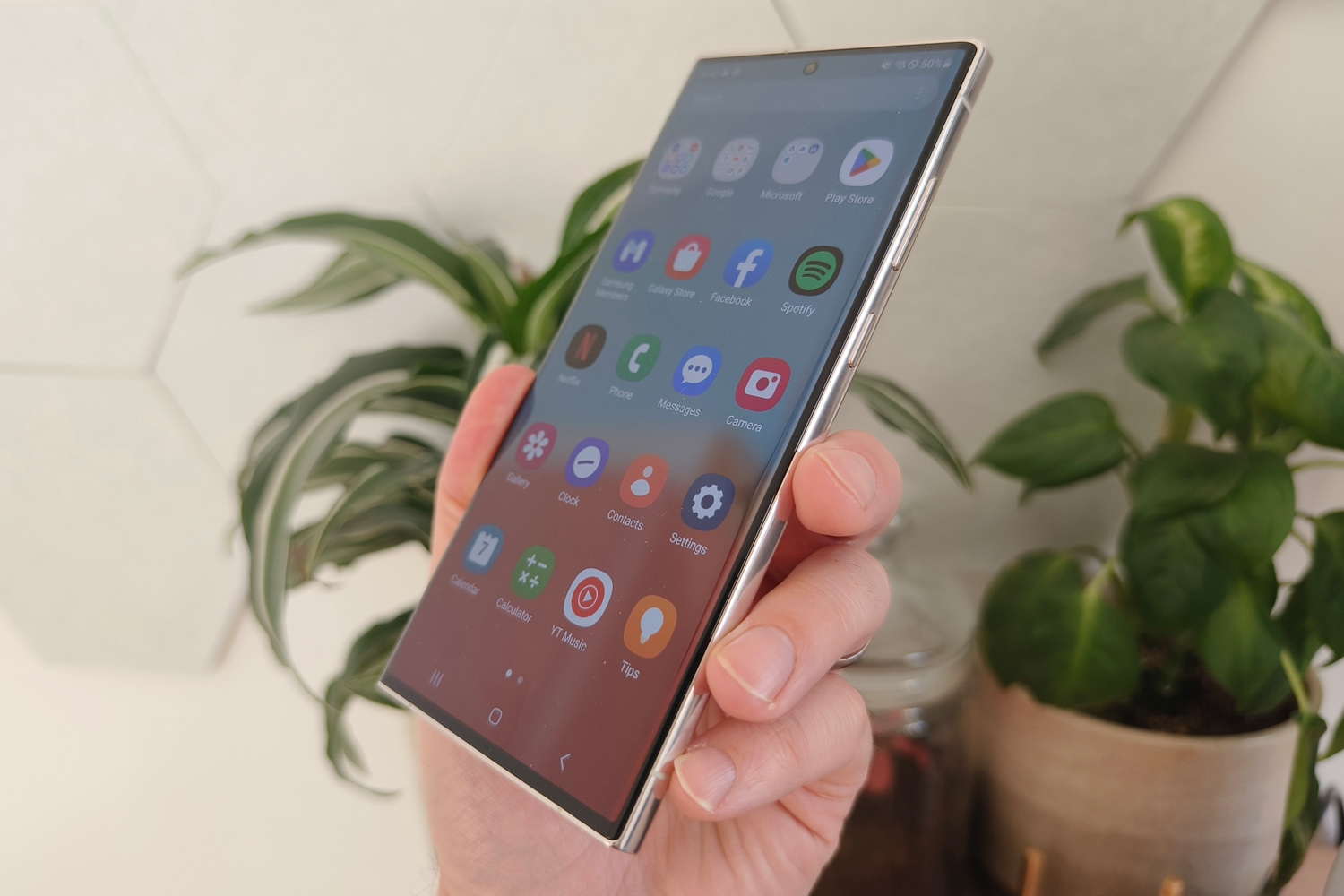
The Galaxy S23 Ultra’s remit hasn’t changed: it’s still the very best of Samsung in a (non-folding) phone, with astonishing cameras and a productivity focus few rivals can hope to match, courtesy of the built-in stylus. As such, it commands a high price.
A base model S23 Ultra with 256GB of storage will cost $1199/£1249 SIM-free. That’s a heck of a lot in anyone’s book, and an increase over last year. An Apple iPhone 15 Pro Max with the same capacity costs a slightly lower £1199 in the UK. There’s less to separate the two in the US, where the latest Pro Max costs the same as the S23 Ultra.
Considering the design isn’t all that different from the previous generation, and the software has seen only minor tweaks, S22 Ultra owners shouldn’t be in a rush to upgrade either – unless the promise of better battery life justifies the expense. For sheer do-it-all ability though, nothing else comes close.
Stuff Says…
Productivity, photography and performance abilities that are unrivalled in the Android world. Improvements over the previous generation are modest, but the S23 Ultra is still an incredible (and incredibly expensive) flagship.
Pros
Impeccable camera quality in almost all conditions
Fantastic performance and all-day battery life
Gorgeous display with lots of room for S-Pen note-taking
Cons
Charging speeds could be faster
Visually identical to last year’s model
Top-tier specs command a top-tier price
Samsung Galaxy S23 Ultra technical specifications
| Screen | 6.8in 3088×1440 OLED w/ 120Hz, HDR10+, Corning Gorilla Glass Victus 2 |
| CPU | Qualcomm Snapdragon 8 Gen 2 octa-core |
| Memory | 8/12GB RAM |
| Cameras | 256GB/512GB/1TB on-board |
| Storage | 200MP, f/1.7 w/ PDAF, laser AF, OIS + 12MP, f/2.2 ultrawide w/ PDAF + 10MP, f/2.4 telephoto w/ PDAF, OIS, 3x optical zoom + 10MP, f/2.2 telephoto w/ PDAF, OIS, 10x optical zoom rear. 12MP, f/2.2 front w/ PDAF |
| Operating system | Android 13 w/ OneUI 5.1 |
| Battery | 5000mAh w/ 45W wired charging, wireless charging, reverse wireless charging |
| Dimensions | 163x78x8.9mm, 234g |

